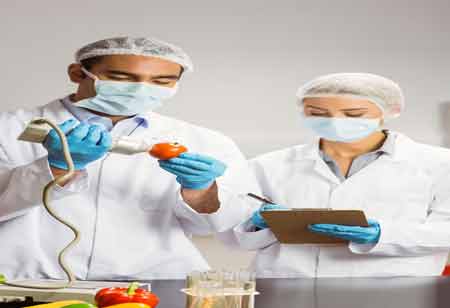THANK YOU FOR SUBSCRIBING
Be first to read the latest tech news, Industry Leader's Insights, and CIO interviews of medium and large enterprises exclusively from Food and Beverage Tech Review
Techniques for Securing Food Processing Safety
Establishing monitoring procedures ensures compliance with critical limits and allows for immediate corrective actions when necessary.

By
Food and Beverages Tech Review | Thursday, September 25, 2025
Stay ahead of the industry with exclusive feature stories on the top companies, expert insights and the latest news delivered straight to your inbox. Subscribe today.
Fremont, CA: Food processing is a critical component of the food supply chain, transforming raw materials into safe, consumable products. Maintaining safety throughout this process is essential to protect consumers from foodborne illnesses and uphold industry standards. By implementing best practices, organizations can ensure high levels of food safety. Proper employee training on safety protocols fosters a secure working environment, while routine equipment inspections help detect potential hazards early. Additionally, preventing cross-contamination is vital to minimizing the risk of foodborne illnesses.
Training should cover personal hygiene, cross-contamination prevention, safe food handling techniques, and proper cleaning and sanitization procedures. Regular refresher courses help reinforce these concepts and keep employees' minds safe. Food processors should monitor and maintain appropriate temperatures throughout the processing, storage, and transportation stages. It includes using calibrated thermometers to ensure that equipment like refrigerators, freezers, and cooking devices operate at safe temperatures. Regular checks of temperature logs help identify potential issues and ensure compliance with safety standards.
Good Manufacturing Practices (GMP) are guidelines that outline the minimum requirements for food processing facilities. Training all staff in GMP fosters a culture of safety and accountability within the organization. Regular inspections and audits can help identify areas for improvement. Regular reviews of the plan ensure its effectiveness and relevance. A knowledgeable workforce is critical for implementing and maintaining safe food processing practices. Food processing equipment design helps for easy cleaning and sanitization, with regular maintenance and cleaning schedules established to prevent contaminant buildup.
Color-coded cutting boards and utensils can help visually reinforce the separation of food types. Regular monitoring of food handling practices ensures adherence to cross-contamination prevention measures. Traceability systems allow food processors to track the movement of ingredients throughout the processing chain. By implementing a robust traceability system for contamination or spoilage, organizations can quickly identify and address potential safety issues. Effective traceability helps minimize risks to consumers and maintain the organization's reputation.
Addressing identified deficiencies helps maintain high safety standards and demonstrates a commitment to food safety, an ongoing process requiring constant evaluation and improvement. Regularly reviewing and updating safety protocols, training programs, and equipment can help ensure that food processing practices remain effective and aligned with industry standards. By implementing best practices, food processors can create a secure and sanitary environment. Continuous improvement and regular audits enhance food safety measures, increasing consumer confidence and satisfaction.
I agree We use cookies on this website to enhance your user experience. By clicking any link on this page you are giving your consent for us to set cookies. More info


However, if you would like to share the information in this article, you may use the link below:
https://www.fbtechreviewapac.com/news/techniques-for-securing-food-processing-safety-nwid-2116.html





